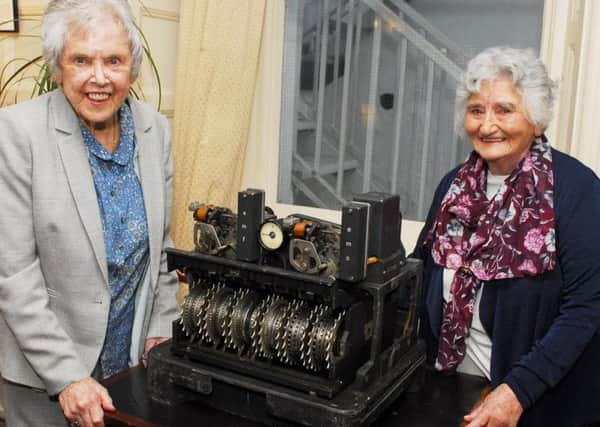Hitler's most secret code machine comes to The National Museum of Computing at Bletchley Park


The 1940s Lorenz SZ42 was cutting edge technology in its time.
It will join the other code-breaking machines, including the famous Enigma, at the museum.
Advertisement
Hide AdAdvertisement
Hide AdMuch more complex than the Enigma, the Lorenz cipher could only be broken by clever deduction from Bill Tutte who worked out the machine’s architecture without ever having set eyes on it.
As a result, the Allies were routinely able to read German High Command’s top secret messages.
From 1944, with the creation of the colossus computer by Tommy Flowers, they were able to reduce the decrypt time from weeks to just hours.
The Lorenz was handed over to the museum on long-term loan last week at a ceremony in London.
Advertisement
Hide AdAdvertisement
Hide AdIt is estimated that about 200 Lorenz machines were in existence during the Second World War, but only four are known to have survived.
The machine to be displayed at TNMOC has the serial number 1137 and was used at the German HQ in Norway at Lillehammer, north of Oslo.
Since Norway was occupied by the Germans until the end of the war, it is believed it will have received the final surrender instruction message at 24:00 hours on May 8, 1945, marking the end of the war.
The loan to the museum completes the set of artefacts that tell the Lorenz story in its entirety from encrypt to decrypt.
Advertisement
Hide AdAdvertisement
Hide AdAndy Clark, chairman of The National Museum of Computing, said: “We are enormously grateful to the Norwegian Armed Forces Museum for its generous loan. It completes a truly unique set at TNMOC and helps bring further life to the story that we have always wanted to tell as clearly and dynamically as possible.
He added: “The technologies at the core of the Lorenz story – encryption, communications and computing – are at the very heart of our modern world, so the narrative is as relevant today as it was then and an inspiration to the next generation of computer scientists and engineers.